People who are considering cosmetic hooded eye surgery, also known as upper blepharoplasty, are concerned about visible scars after the procedure. This is an understandable concern, as people are concerned that the scar from the incision for excess skin and fat removal will be visible when they close their eyes. As a specialist in all types of cosmetic eyelid surgery, I can explain how upper eyelid scars can be virtually imperceptible.
I specialize in all types of cosmetic eyelid surgery as an oculofacial or oculoplastic surgeon, including upper blepharoplasty for hooded eyes, Asian double eyelid surgery to create an eyelid crease, and other eyelid surgeries not performed by general cosmetic or plastic surgeons, such as eyelid ptosis correction, and lacrimal gland prolapse.
As an eyelid specialist, I frequently perform revision surgeries to correct the work of other doctors, such as reconstructive upper eyelid surgery for issues such as infection, skin shortage from excessive skin removal, or undiagnosed eyelid ptosis, as well as other upper and lower eyelid revision surgeries.
Hooded Eye Surgery Before and After
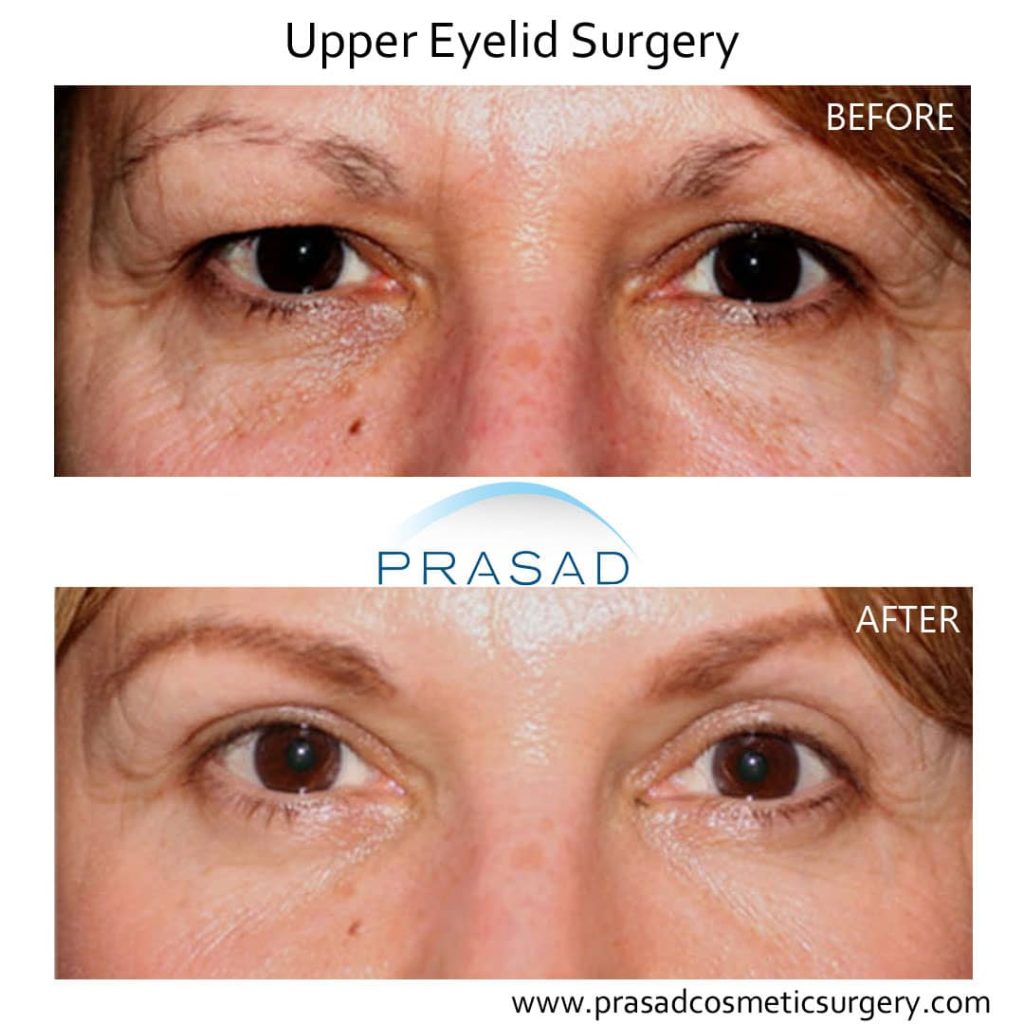
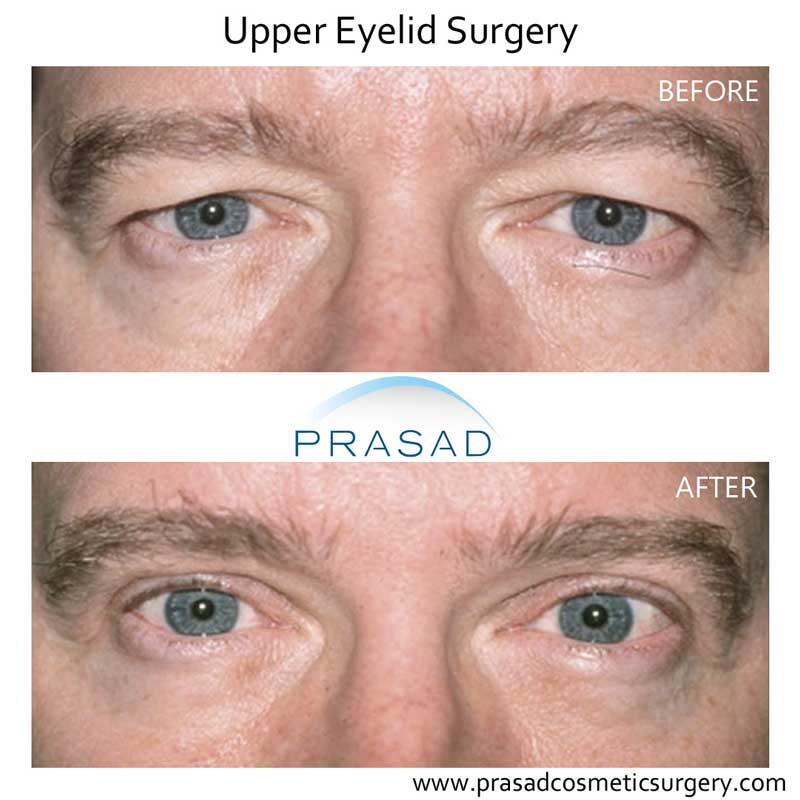

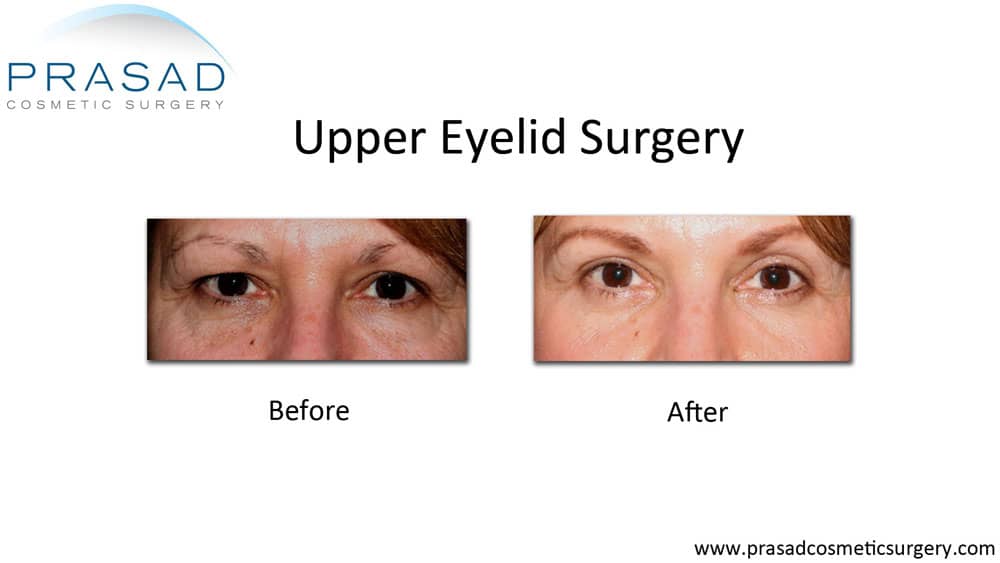

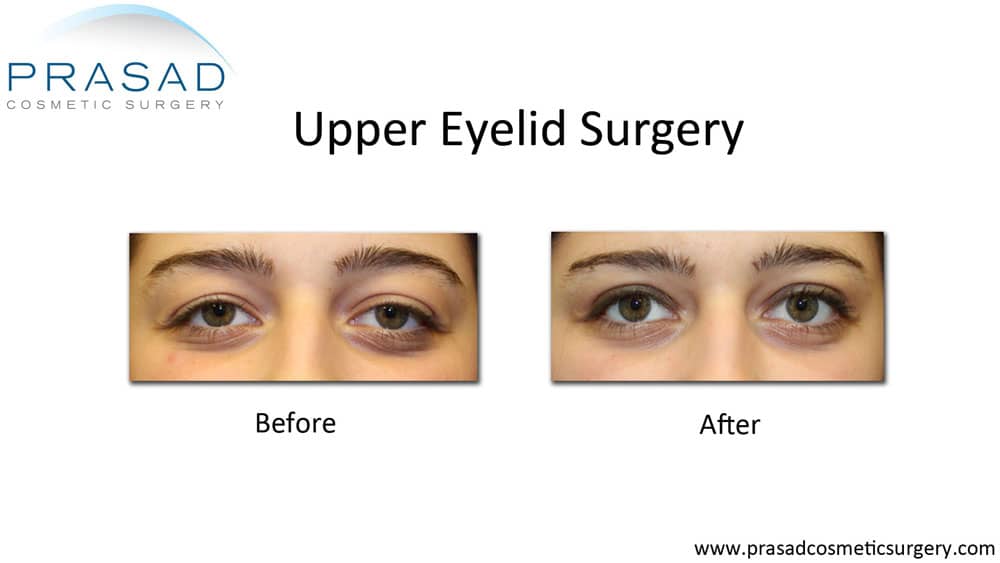
Eyelid Surgery Incisions
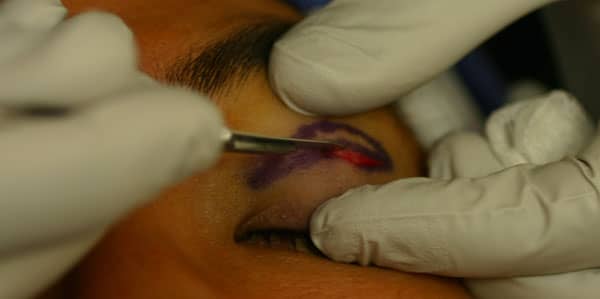
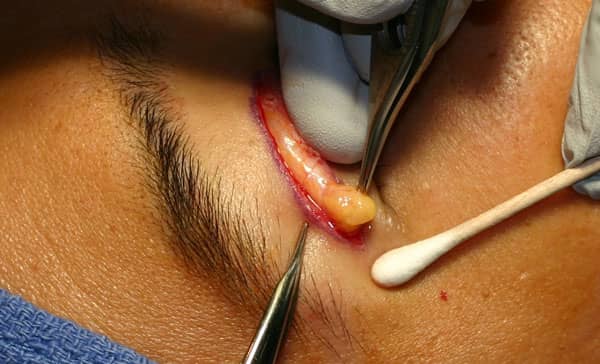
Eyelid Incisions in Darker Ethnic Skin
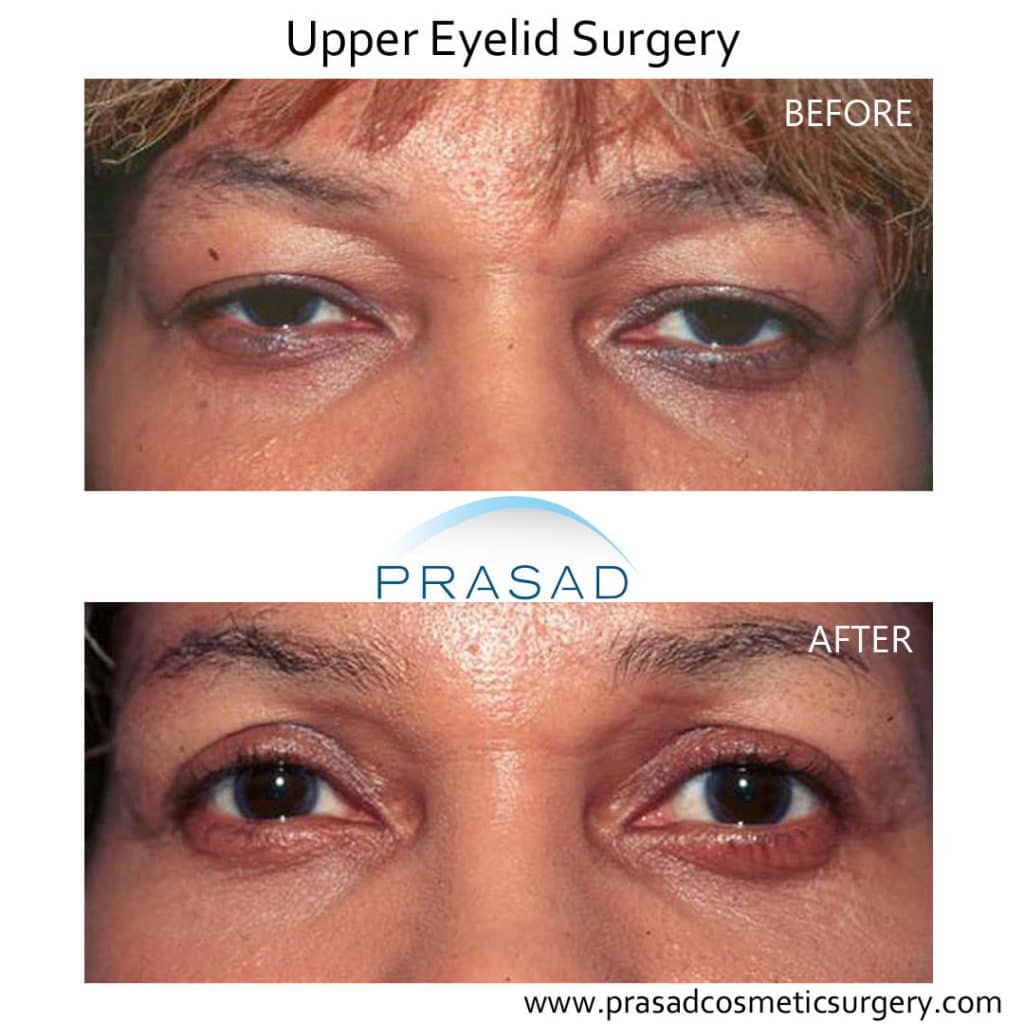

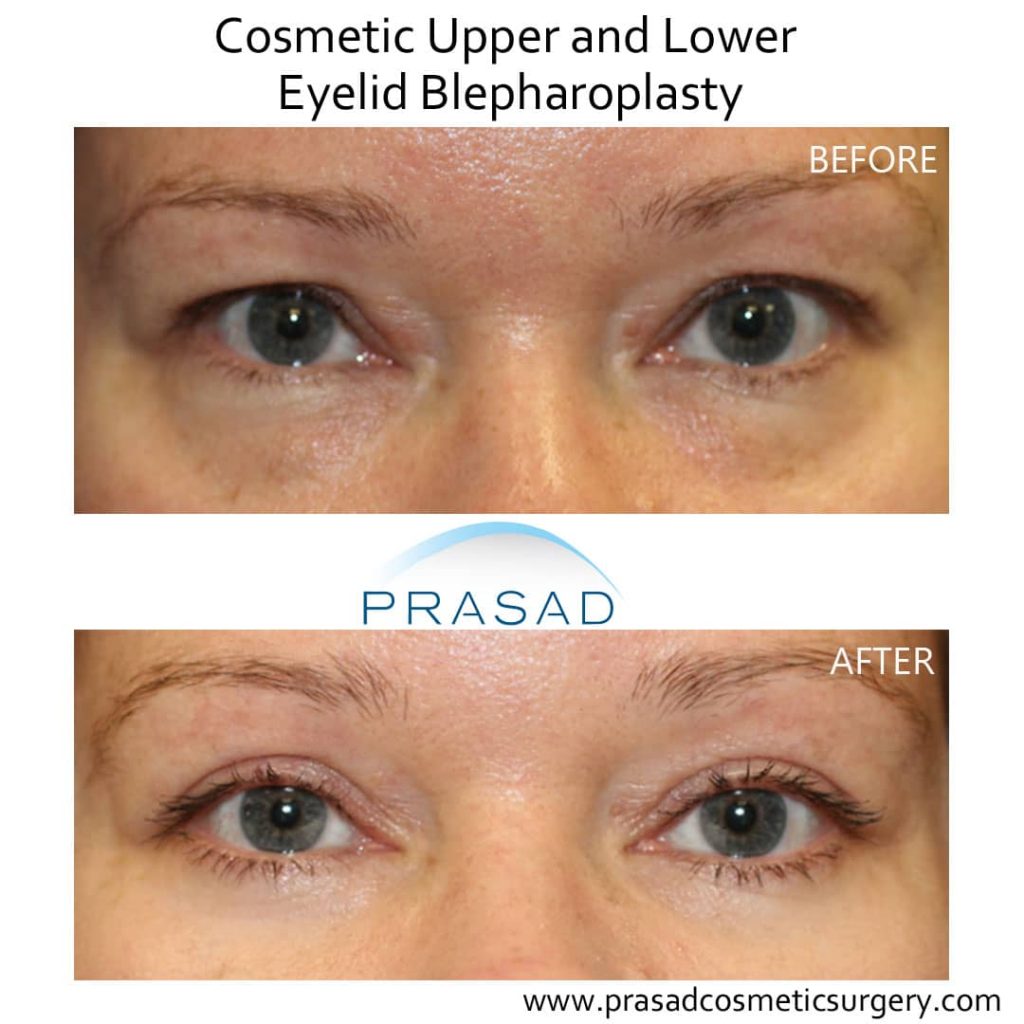
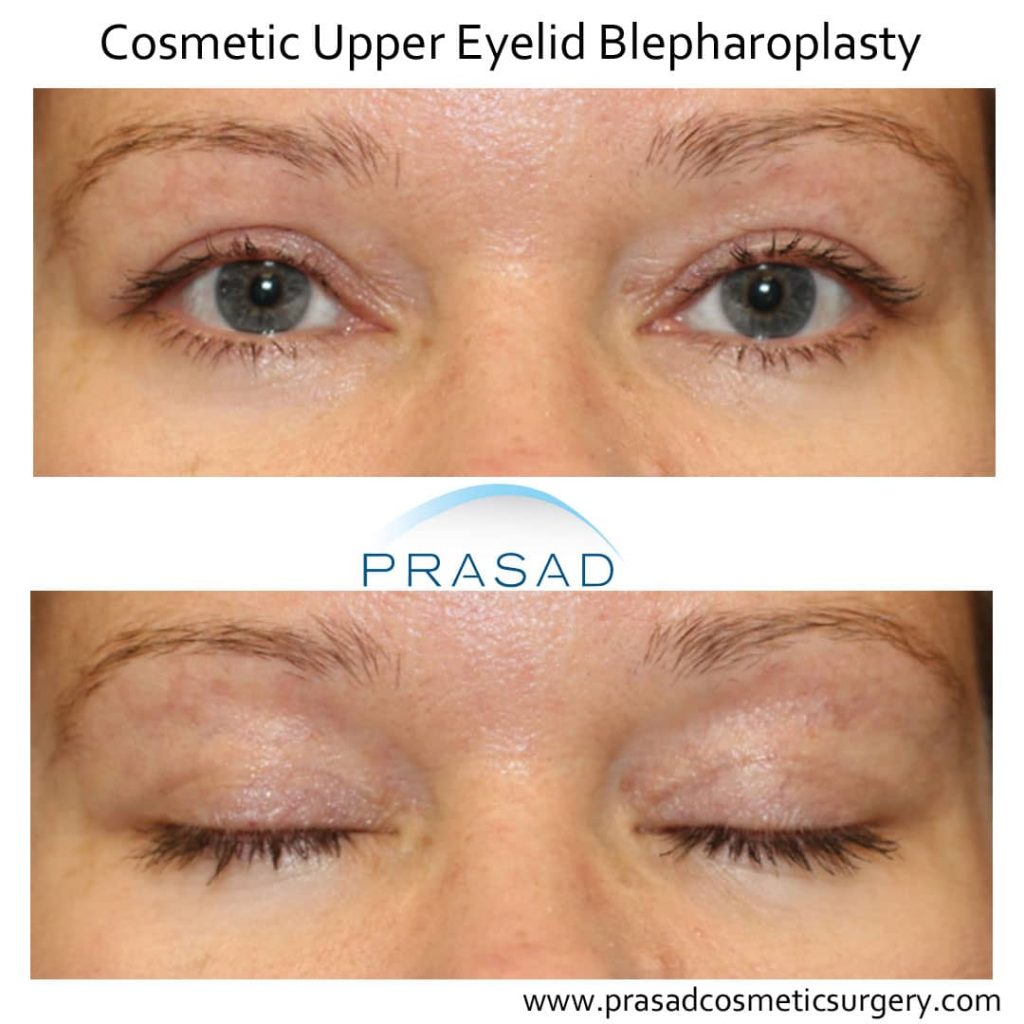
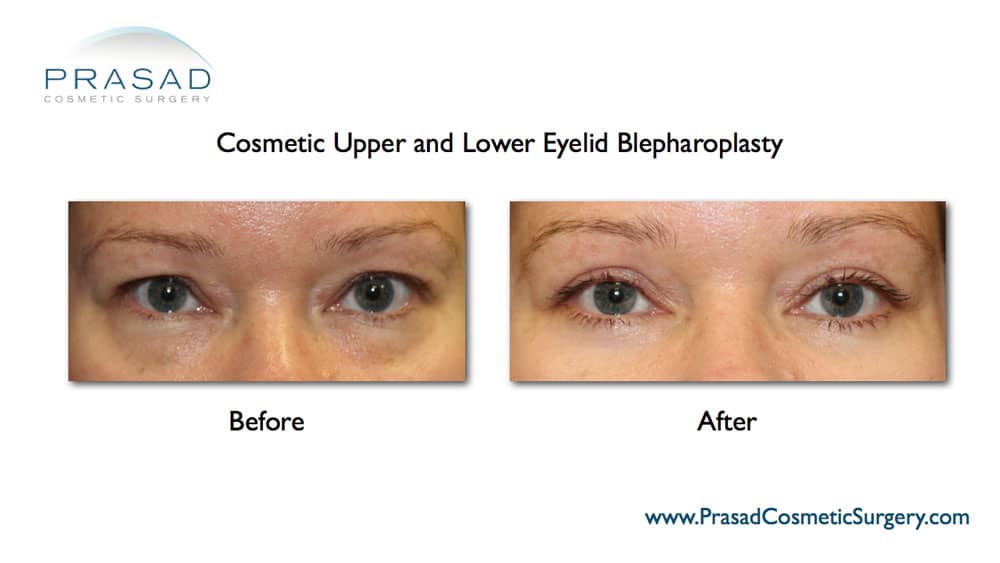
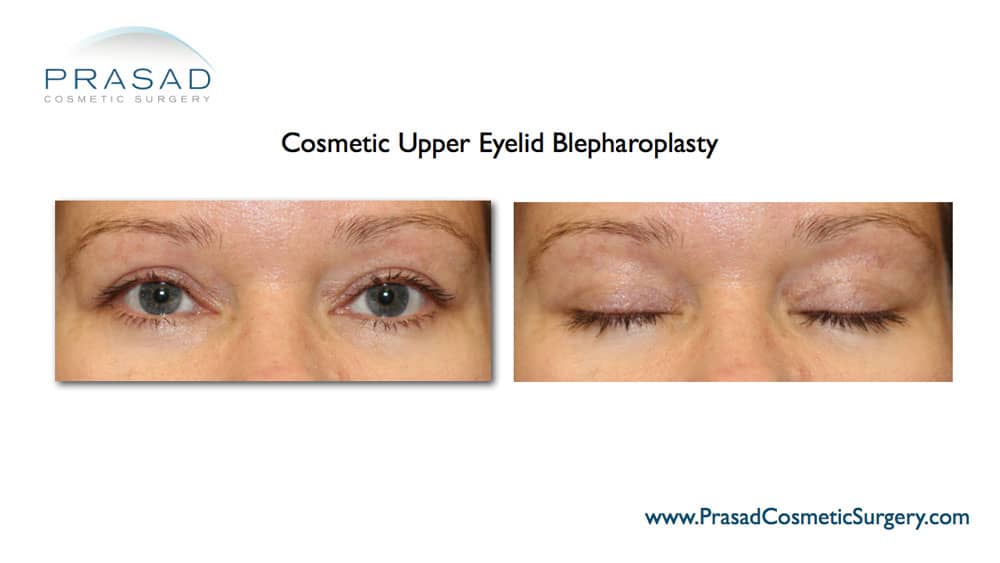
Double eyelid surgery is performed on people who do not have a natural eyelid crease, such as people of Asian descent born without a defined eyelid crease, also known as a monolid. The crease is formed by first excising excess skin and fat that prevents the formation of an eyelid crease, and then sewing the eyelid skin to the levator muscle, which is the muscle that lifts the eyelid.
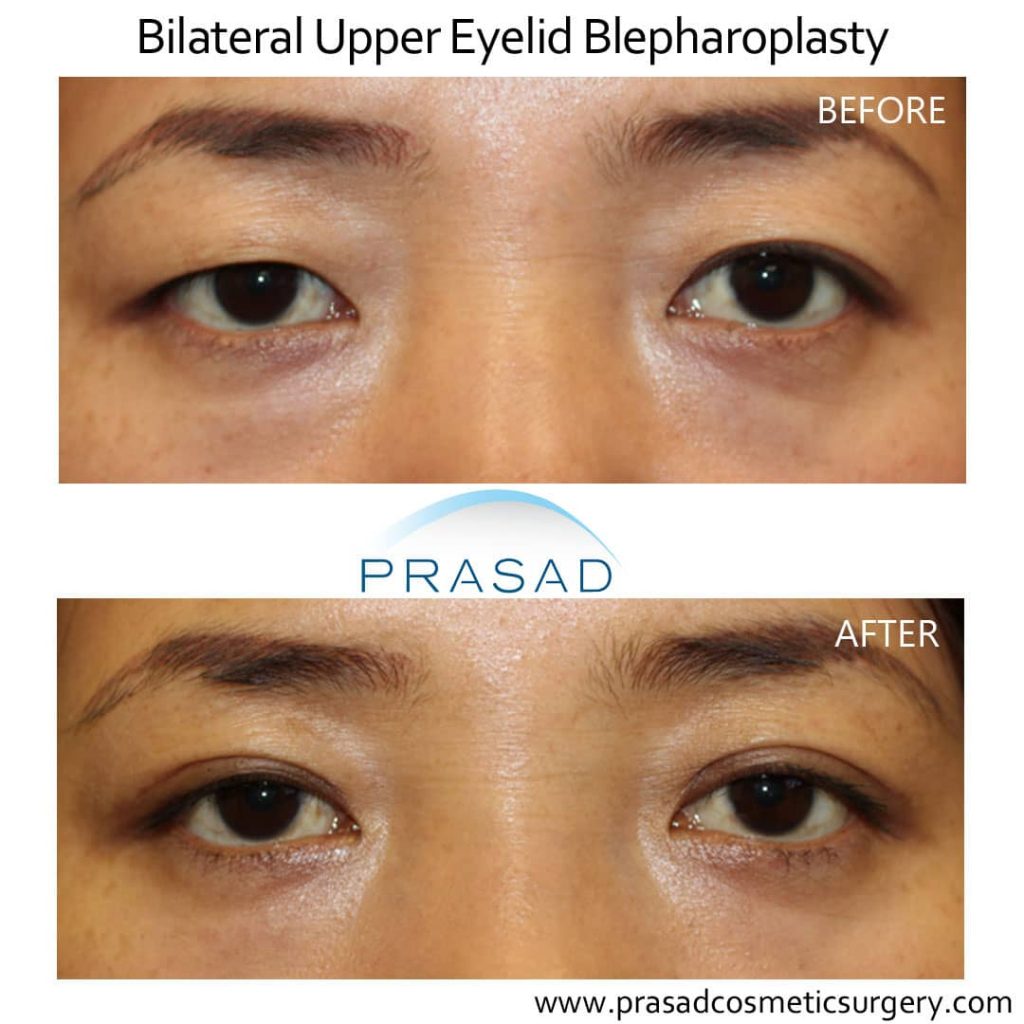
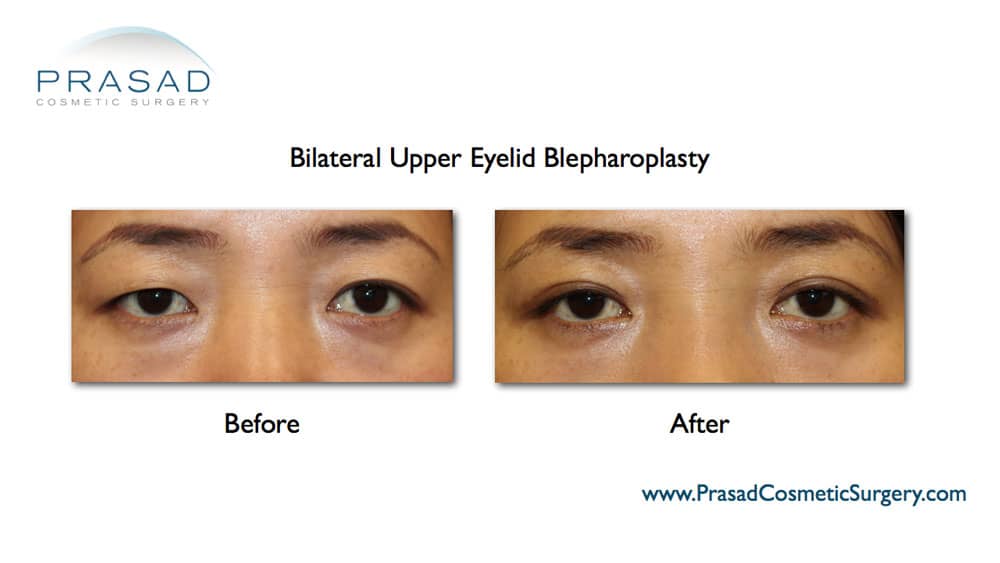
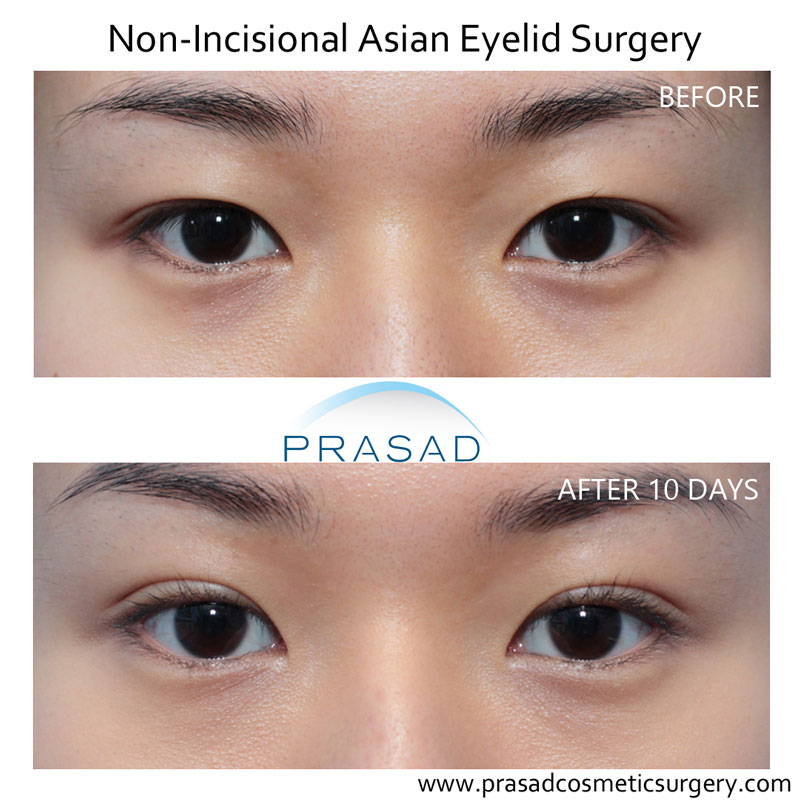
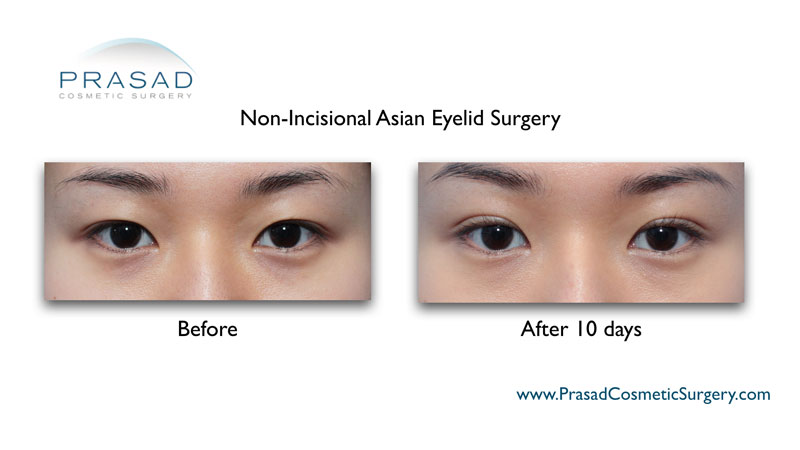
Importance of Post-Operative Healing

Recovery
After the first month of initial healing, the appearance of a swollen incision line improves. Within the first month following surgery, collagen that is part of the healing process becomes disorganized, making the eyelids and incision appear large and swollen.
One month after surgery, collagen becomes more organized, and the collagen fibers flatten, resulting in a less swollen appearance. The incision line on the upper eyelid becomes flatter over time. The incision line on the eyelids can look no different than the natural fold of the eyelids with proper incision closure while minimizing tension on the incision, no issues with surgical healing, and enough time.
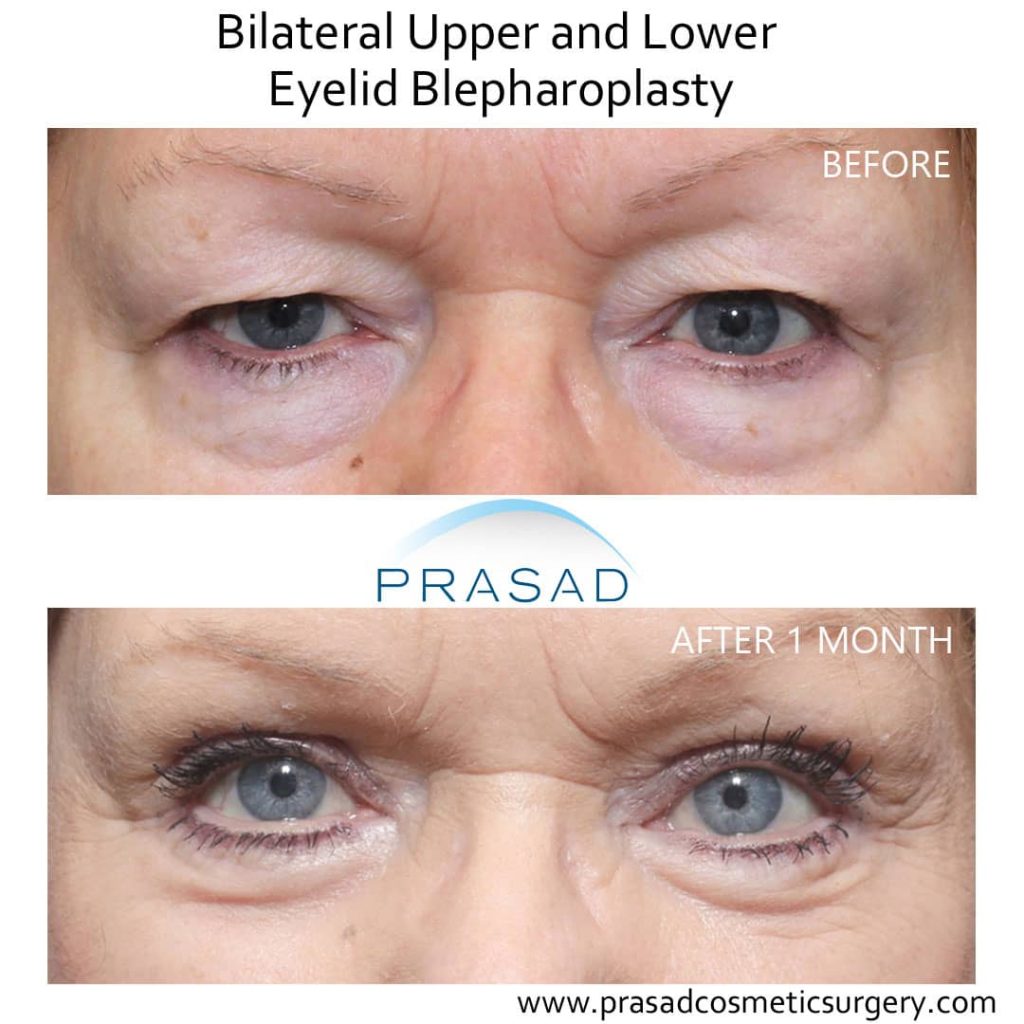
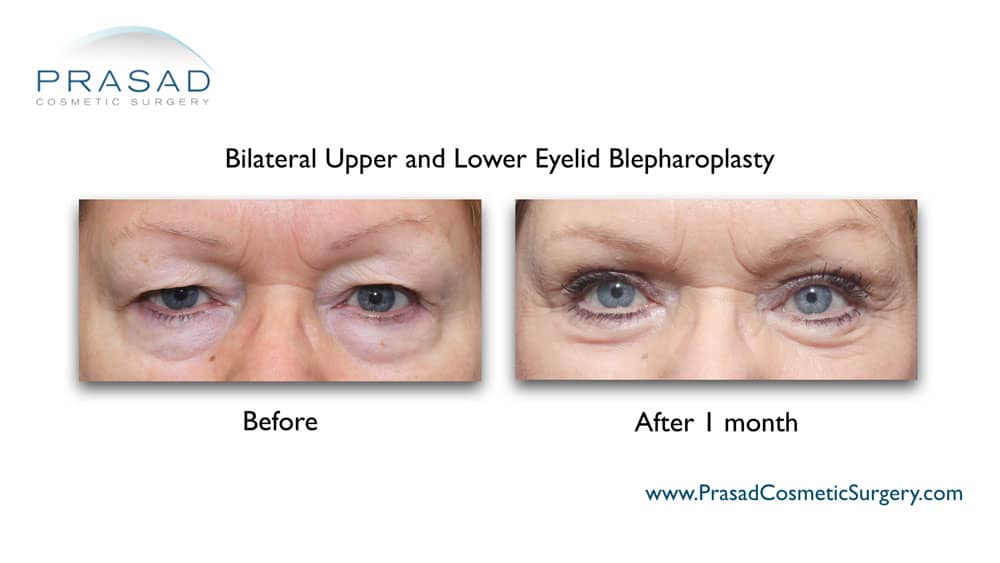
Conclusion
Hooded Eye Surgery in NYC and Long Island, New York
Dr Amiya Prasad is a Board-certified cosmetic surgeon, and Fellowship-trained oculofacial plastic and reconstructive surgeon. To schedule a consultation, fill up the form below or contact any of our offices at (212) 265-8877 in Manhattan, New York City; or (516) 742-4636 in Garden City, Long Island, New York; or Vienna, Virginia at (703) 356-1336.
